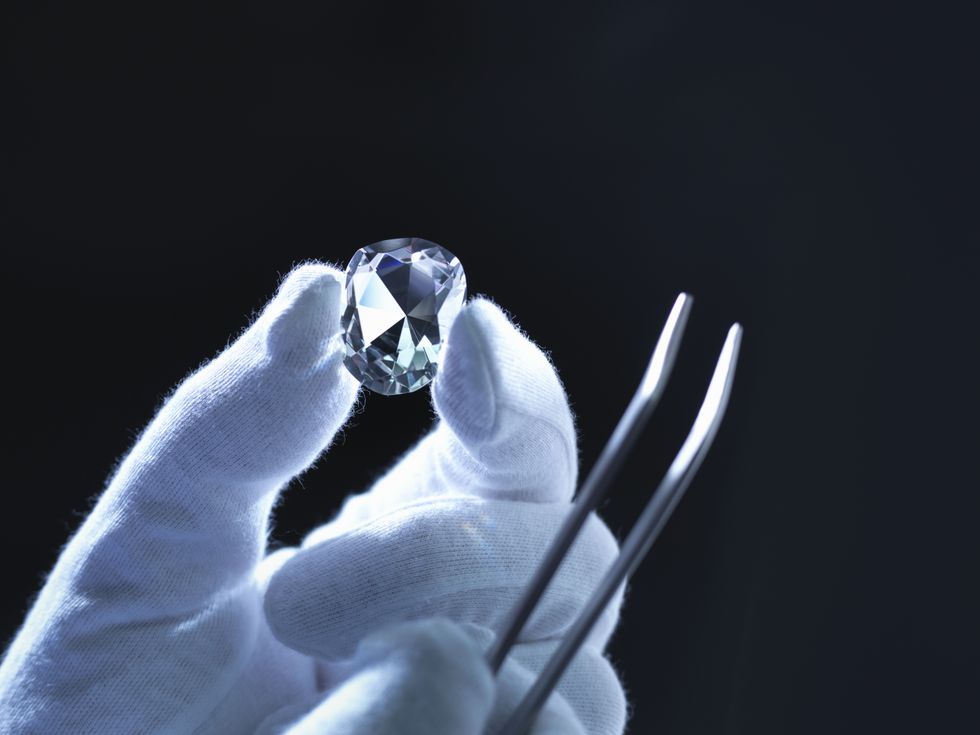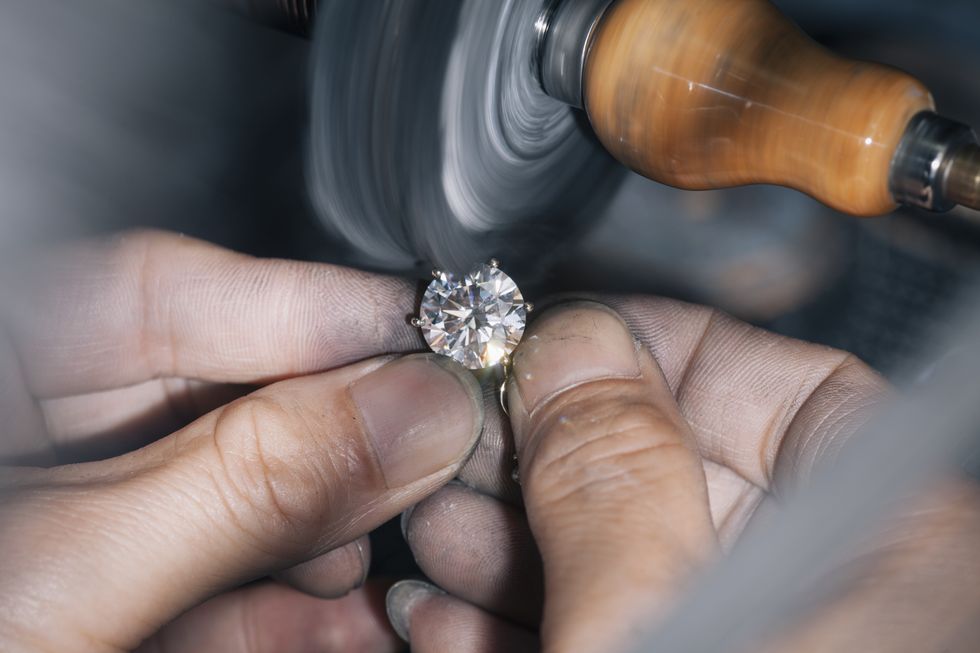Diamond prices have plummeted dramatically, with natural diamonds now costing 26 per cent less than two years ago.
The fall has been even more severe for lab-grown diamonds, which have seen their value plunge by 74 per cent since 2020.
“It’s a bad time to buy a diamond,” a Hatton Garden jeweller told The Guardian this weekend. “They’ll probably be cheaper in a few weeks.”
The price of a one-carat natural diamond has dropped from £5,422.67 in May 2022 to £3,923.83 last December.
De Beers, the diamond industry giant, has entered 2024 with a massive £2billion stockpile of unsold diamonds.
The company has been forced to cut production in its mines by 20 per cent amid the market downturn.

Diamond prices have plummeted dramatically, with natural diamonds now costing 26 per cent less than two years ago
GETTY
In a significant development, Anglo American, De Beers’ owner, has put the historic diamond company up for sale.
The crisis reflects a broader upheaval in the diamond market, which has seen unprecedented price drops despite the current high-inflation environment.
Several factors have contributed to the dramatic fall in diamond prices, according to diamond retail price tracker Edahn Golan.
A post-Covid “revenge spending” boom in luxury goods and rescheduled weddings initially drove high demand, but this has since declined sharply.
The global economic gloom and reduced demand from China have further dampened the market.
Fewer marriages overall have also played a significant role in weakening diamond sales.

Diamond market experts point to historical resilience in the face of previous price shocks
GETTY
Lab-grown diamonds have emerged as a major disruptor in the market, with production times reduced from weeks to just hours.
These synthetic stones now represent 45 per cent of the bridal jewellery market, dealing a significant blow to traditional diamond sellers.
Their appeal to millennial buyers is partly due to their more traceable provenance compared to mined diamonds, making them appear more ethical.
The price difference is stark – a lab-grown one-carat diamond now costs just £700.43, down from £2,599.38 in January 2020.
Robert Willis, director at E Katz & Co in Hatton Garden, notes customers are still spending big, with budgets of £5,000 to £8,000 for rings.
“They are much bigger stones,” Willis says of lab-grown diamonds. “About two or three times bigger… three carats is normal, even four or five.”
However, Geoffrey Farrow at Raphael takes a different view: “They are synthetic… Lab-grown sounds exotic, but it’s created – they make it by the buckets. There’s no history to it. The price is going to go down further.”
Diamond market experts point to historical resilience in the face of previous price shocks.
Jewellery historian Jack Ogden notes how the 1725 Brazilian diamond discovery initially caused prices to fall by two-thirds, but values recovered by 1750.
A similar recovery followed the 1867 South African diamond discoveries, aided by new wealthy American railroad buyers.
However, Ogden warns the current market dynamics may be different: “It’s a very artificial market… They’re very valuable because people want to pay money for them.”